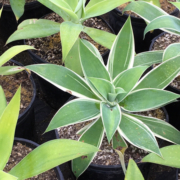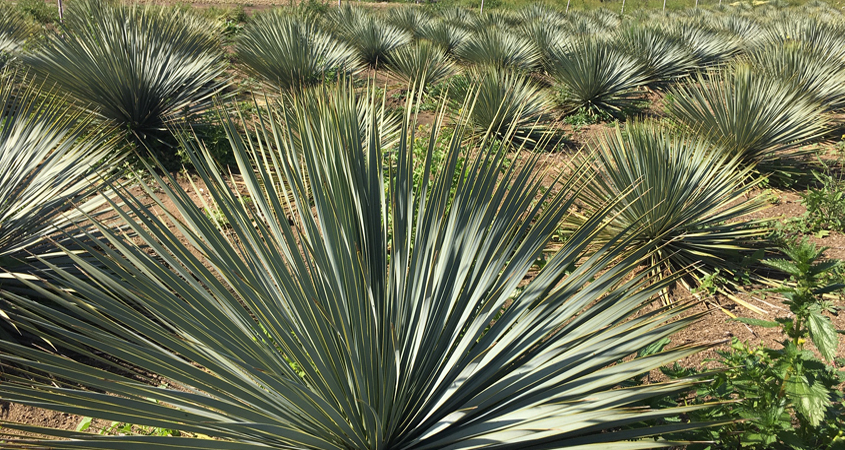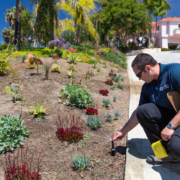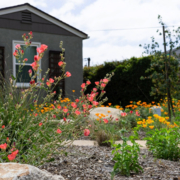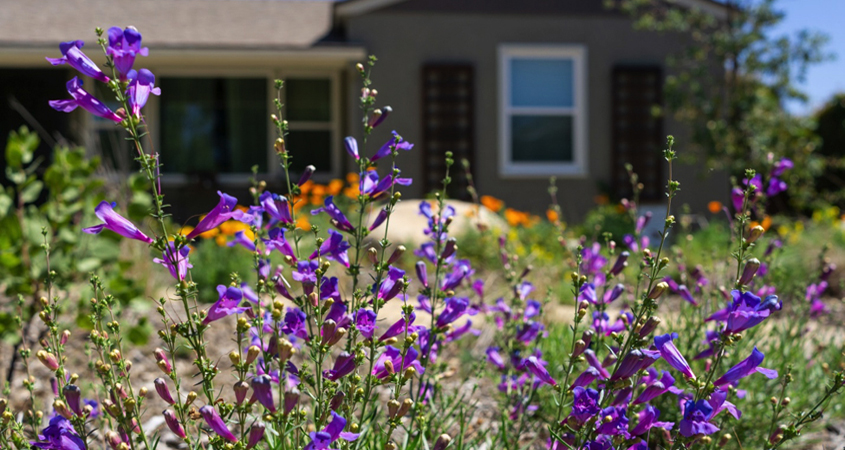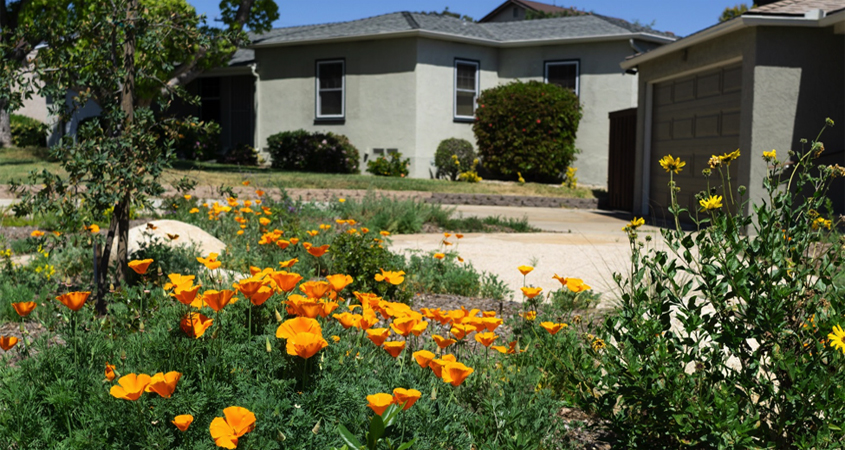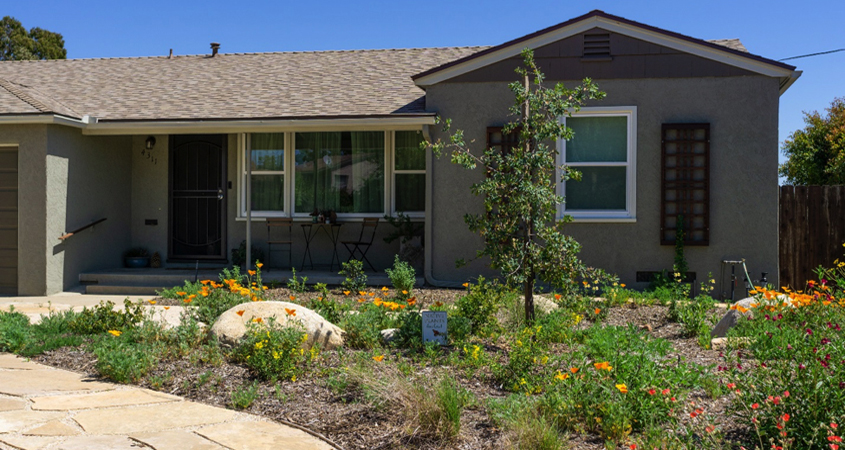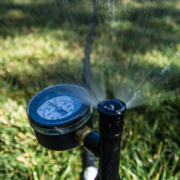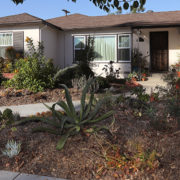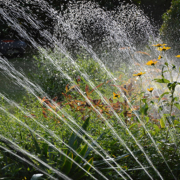Ornamental Horticulture Groundbreaking Cultivates Career Opportunities
With the turn of 11 gleaming shovels, groundbreaking took place on August 22 for a $16.7 million project to renovate and improve indoor and outdoor classrooms and facilities for Cuyamaca College’s Ornamental Horticulture program.
Thousands of students have graduated from the program since its launch in 1980. Many have gone on to careers in landscape design and sustainable landscaping, irrigation technology and turf management.
The renovation will allow the program to provide a hands-on training experience reflecting current industry standards.
“We are a career technical education discipline and we strive to help students get jobs, so it is very important that we are able to replicate what’s currently used in industry,” said Leah Rottke, program coordinator for the horticulture program.
Rottke said she hopes the new facilities will increase program enrollment, one of her long-term goals.
“What I let students know is that it’s an interesting time to study horticulture. There are more opportunities available than qualified graduates,” said Rottke.
Green industry faces shortage of qualified employees
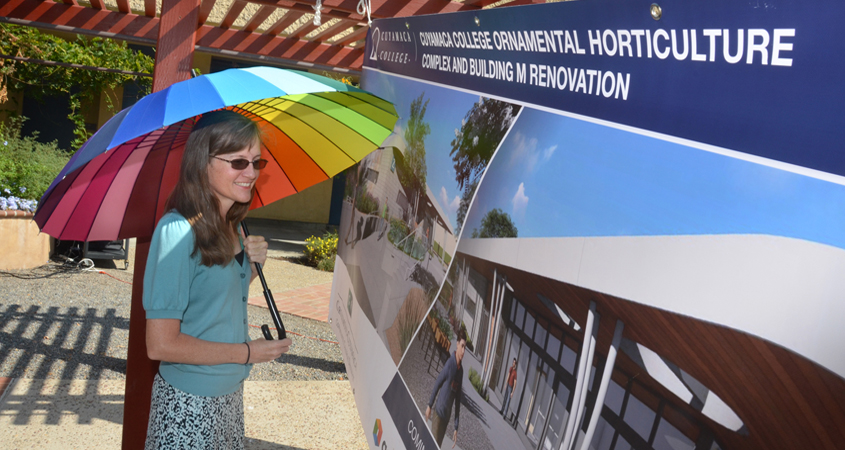
A banner depicts a rendering of the new Ornamental Horticulture complex when completed in 2022. Photo: Cuyamaca College
The green industry continues to grow, but is battling a serious labor shortage. Statistics from the IBIS World November 2018 Landscaping Services Industry Report show employment of more than one million people with annual revenue of $93 billion.
Along with its Center for Water Studies, Cuyamaca College hopes to expand opportunities for its students in these flourishing career fields.
Many of the program’s faculty are also employed in the industry, another benefit for the students, and their prospective employers.
“This gives students the opportunity to learn really practical information and experience about what the industry is like,” said Rottke. “It is also often their first networking opportunity.”
Rottke said her greatest challenge is reaching people who aren’t aware of the excellent career opportunities in the green industry.
The two-year program at Cuyamaca College offers eight degrees and nine certificates in arboriculture, floral design, golf course and sports turf management; irrigation technology; landscape design; landscape technology; nursery technology; sustainable urban landscapes; and basic ornamental horticulture.
Students can earn either a degree or a professional certificate in all eight programs.
Cuyamaca’s programs also offer paid internships where students can start working in their chosen career field while pursuing their education.
Popular retail nursery remains open during renovation
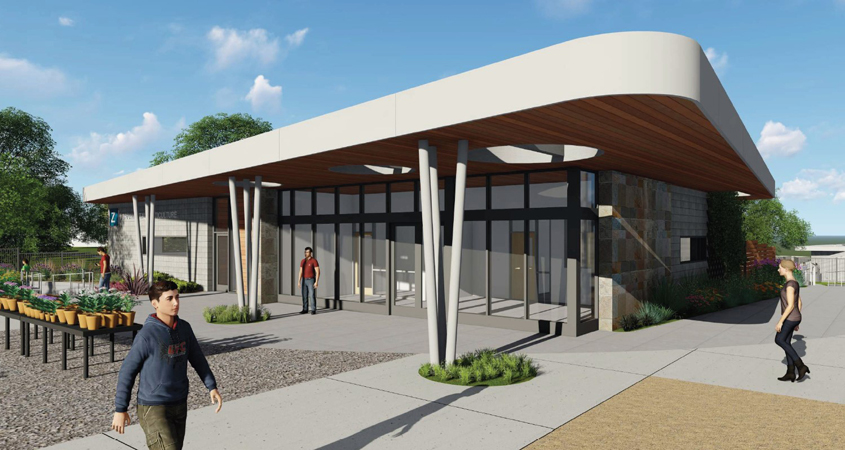
A rendering of the Ornamental Horticulture program’s new Building M, where classrooms and new lab faculties will be housed. Photo courtesy Cuyamaca College
The renovation will include updated classroom and lab facilities, well-equipped greenhouses, an outdoor instructional area, expanded retail space and much-needed storage space.
Rottke said the new greenhouses and retail space will be a boost to the program’s popular retail nursery. Proceeds from nursery sales fund scholarships and class trips outside of the region. About 30,000 plants are sold annually, including nearly 25 percent of annual sales at the popular Spring Garden and Butterfly Festival.

Larry McLemore, Cuyamaca College dean of career and technical education, views project renderings at the groundbreaking event with GCCCD Chancellor Cindy L. Miles. Photo: Cuyamaca College
“Ornamental Horticulture has a storied past at our college and it is long overdue for a renovation,” said Cuyamaca College President Dr. Julianna Barnes. “With the modernizing of facilities and the new greenhouses in particular, students have a lot to be excited about.”


